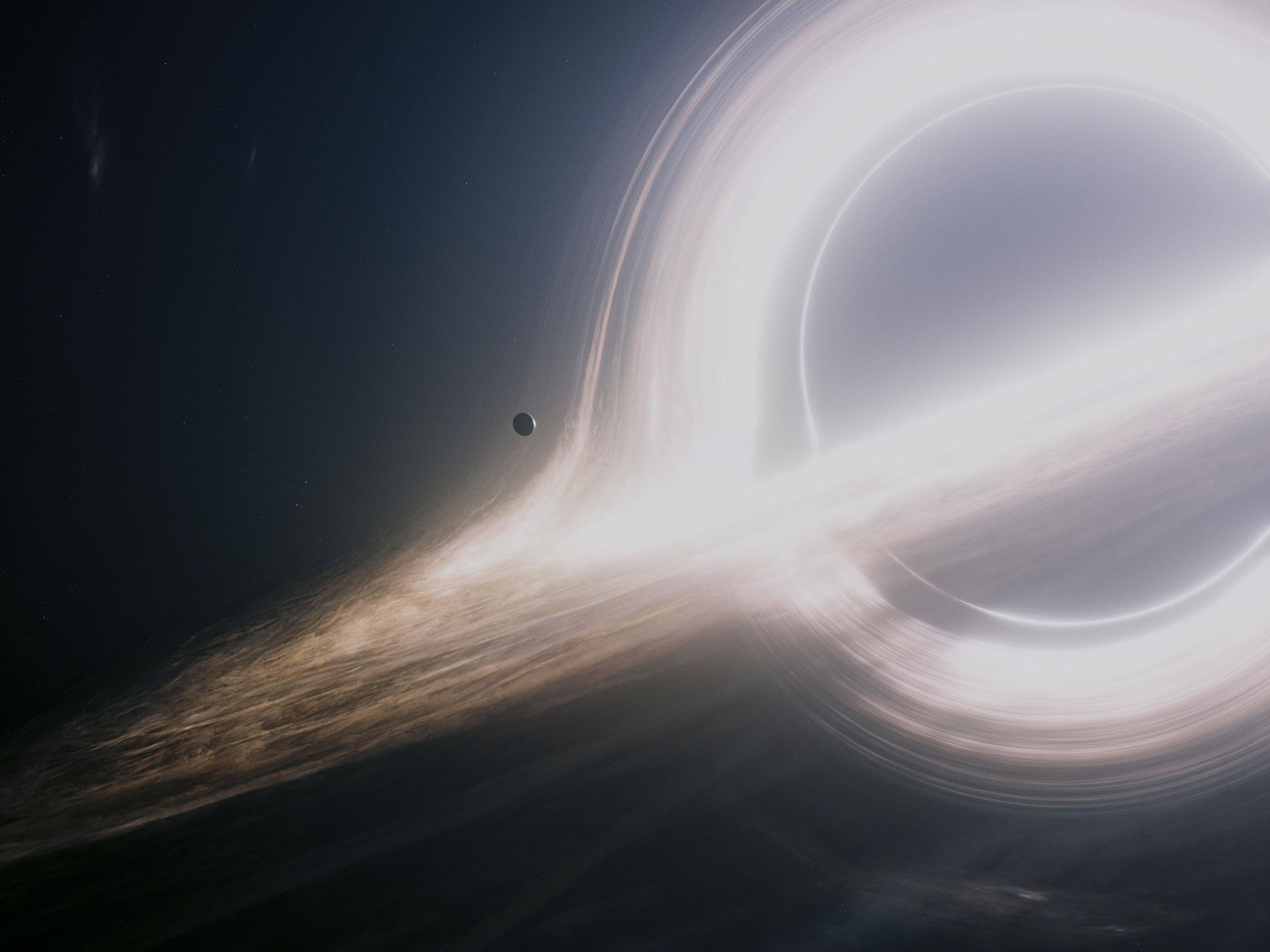Interstellar should be shown in school science lessons, says top academic journal
Oscar-winning graphics of wormholes in the 2014 blockbuster useful for teaching general theory of relativity, according to American Journal of Physics

The blockbuster movie Interstellar should be shown in school physics lessons because of the ground-breaking way its graphics portray wormholes, according to a leading academic journal.
Christopher Nolan’s film, which stars Matthew McConaughey and Anne Hathaway, would be a useful teaching tool for students learning elementary relativity theory according to a paper in the American Journal of Physics, written by the experts behind the film’s jaw-dropping graphics.
Unlike earlier Hollywood efforts, the film, released in 2014, took a scientifically rigorous approach to creating graphics software for showing wormholes and black holes – gaps or glitches in time and space suggested by Einstein’s general theory of relativity. The breathtaking results were awarded with Oscar and Baftas for visual effects.
The paper, ‘Visualising Interstellar’s Wormhole’, published in this month’s edition of the journal, suggests says that Interstellar was “ an opportunity to bring realistic wormholes and black holes into the Hollywood arena but also an opportunity to create images of wormholes and black holes for relativity and astrophysics research”.
Interstellar – also starring Jessica Chastain and Michael Caine - portrays wormholes like a crystal ball hanging in space, as opposed to the customary void with matter falling into it. Inside the crystal ball was a distorted image of the galaxy on the other side.
Interstellar’s wormhole graphics, made by production company Double Negative, “offer a variety of opportunities for students of in elementary courses of general relativity”, the paper argues.
The graphics used ground-breaking software to create an extremely high-resolution, revealing delicate patterns never seen before.
Images of wormholes – which theoretically allow very quick travel between galaxies and universes – are a good way of teaching Einstein’s general theory of relativity, if they are scientifically accurate, the paper argues. General relativity theory holds that the universe behaves differently in extreme conditions, for example when a star turns into a black hole.
“Although wormholes were central to the theme of Star Trek andStargate, none of these have depicted correctly a wormhole as it would be seen by a nearby human. Interstellar is the first to do so,“ it says. It did this by imagining the wormhole’s “two celestial spheres” and “Einstein ring” on its outside.
The article – and another academic paper on Interstellar’s depiction of black holes for Classical and Quantum Gravity - was written by Prof Kip Thorne, a leading authority on wormholes who was an executive producer on the movie, visual effects artists Oliver James, Eugénie von Tunzelmann and Paul Franklin from Double Negative.

READ: Interstellar review: Christopher Nolan's sci-fi blockbuster starring Matthew McConaughey is the next enduring epic
Software used for Interstellar's wormholes have helped real-life astrophysicists study black holes
Nolan told the BBC: "Right from the beginning we all really believed it's time to inspire another generation to really look outwards and to look to the stars again.
"We hoped that by dramatising science and making it something that could be entertaining for kids we might inspire some of the astronauts of tomorrow - that would be the ultimate goal of the project,"
The editor of the American Journal of Physics told the corporation that publishing the article was “a no brainer” because experts had reviewed the film’s scientific assumptions and found them to be accurate.
Join our commenting forum
Join thought-provoking conversations, follow other Independent readers and see their replies
Comments
Bookmark popover
Removed from bookmarks